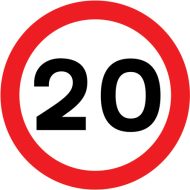This post is current, for a change, because we got back yesterday! We needed a short break and decided to go straight after Easter. We left on Wednesday, April 3rd and returned Sunday, April 7th. It’s not easy choosing a place to go at this time of year that has the promise of some warmth …
Author Archives: scatts
SoCal Summer (final part)
From Palm Springs we were headed for San Diego and the original intention was to visit the Palomar Observatory on the way but a wildfire called Bonny near Aguanda put an end to that idea. Instead we decided to go via the town of Julian, a former gold-rush town that is famous for its apple …
SoCal Summer (part 2)
After a couple of hours delay getting away from Santa Barbara (waiting for someone to turn up and open the shop so I could buy the Aloha shirts mentioned in part 1) we finally hit the road and headed for Las Vegas. It doesn’t look far on the map but it’s a six-hour drive so …
SoCal Summer (part 1)
After a quick debate that Italy lost, and a realisation that we didn’t have many options of dates for our summer holiday, we decided upon and then booked a trip to Southern California (plus a bit of Nevada). We left July 20th and returned August 8th. Unlike previous USA trips, it was just the two …
Zosia goes to university
Zosia was keen to study outside of Poland and the UK and the Netherlands were considered. Thanks to Brexit the cost of universities in the UK rose considerably, even for someone with a British passport like her and they weren’t really offering a lot for it, so the focus was on the Netherlands. She applied …
The end of a generation
Once upon a time, there were two brothers in Ilkeston, Eric (born 1926) and Keith (born 1931) who married two sisters from Leicester, Margaret (born 1928) and Dorothy (born 1933). Keith and Dorothy had two children, me and my sister Diane. Eric and Margaret had no children and were my only uncle and aunt. A …
Coronavirus – hopefully (but probably not) the last word
Just over a week ago, on December 7th, 2022, China finally abandoned its zero-Covid strategy and shifted to “living with the virus”, like the rest of the world. This came just a week after protests in the streets against the continued lock-downs and other harsh restrictions the Chinese had been forced to live with long …
Continue reading “Coronavirus – hopefully (but probably not) the last word”
